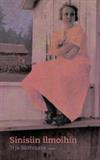
Oliver Twist
by Charles Dickens | Literature & Fiction | This book has not been rated.
ISBN: 1853260126 Global Overview for this book
ISBN: 1853260126 Global Overview for this book
Registered by  pippis
pippis of Turku, Varsinais-Suomi / Egentliga Finland Finland on 4/19/2012
of Turku, Varsinais-Suomi / Egentliga Finland Finland on 4/19/2012
 This Book is Currently in the Wild!
This Book is Currently in the Wild!
 pippis
pippis of Turku, Varsinais-Suomi / Egentliga Finland Finland on 4/19/2012
of Turku, Varsinais-Suomi / Egentliga Finland Finland on 4/19/2012 This Book is Currently in the Wild!
This Book is Currently in the Wild!
1 journaler for this copy...
Journal Entry 1 by  pippis
pippis from Turku, Varsinais-Suomi / Egentliga Finland Finland on Thursday, April 19, 2012
from Turku, Varsinais-Suomi / Egentliga Finland Finland on Thursday, April 19, 2012
 pippis
pippis from Turku, Varsinais-Suomi / Egentliga Finland Finland on Thursday, April 19, 2012
from Turku, Varsinais-Suomi / Egentliga Finland Finland on Thursday, April 19, 2012
Wikipedia wants you to know:
Oliver Twist, also known as The Parish Boy's Progress, is the second novel by English author Charles Dickens, published by Richard Bentley in 1838. The story is about an orphan Oliver Twist, who endures a miserable existence in a workhouse and then is placed with an undertaker. He escapes and travels to London where he meets the Artful Dodger, leader of a gang of juvenile pickpockets. Oliver is led to the lair of their elderly criminal trainer Fagin, naively unaware of their unlawful activities.
Oliver Twist is notable for Dickens' unromantic portrayal of criminals and their sordid lives. The book exposed the cruel treatment of many a waif-child in London, which increased international concern in what is sometimes known as "The Great London Waif Crisis": the large number of orphans in London in the Dickens era. The book's subtitle, The Parish Boy's Progress, alludes to Bunyan's The Pilgrim's Progress and also to a pair of popular 18th-century caricature series by William Hogarth, "A Rake's Progress" and "A Harlot's Progress".
An early example of the social novel, the book calls the public's attention to various contemporary evils, including the Poor Law, child labour and the recruitment of children as criminals. Dickens mocks the hypocrisies of his time by surrounding the novel's serious themes with sarcasm and dark humour. The novel may have been inspired by the story of Robert Blincoe, an orphan whose account of hardships as a child labourer in a cotton mill was widely read in the 1830s. It is likely that Dickens's own early youth as a child labourer contributed to the story's development.
Oliver Twist, also known as The Parish Boy's Progress, is the second novel by English author Charles Dickens, published by Richard Bentley in 1838. The story is about an orphan Oliver Twist, who endures a miserable existence in a workhouse and then is placed with an undertaker. He escapes and travels to London where he meets the Artful Dodger, leader of a gang of juvenile pickpockets. Oliver is led to the lair of their elderly criminal trainer Fagin, naively unaware of their unlawful activities.
Oliver Twist is notable for Dickens' unromantic portrayal of criminals and their sordid lives. The book exposed the cruel treatment of many a waif-child in London, which increased international concern in what is sometimes known as "The Great London Waif Crisis": the large number of orphans in London in the Dickens era. The book's subtitle, The Parish Boy's Progress, alludes to Bunyan's The Pilgrim's Progress and also to a pair of popular 18th-century caricature series by William Hogarth, "A Rake's Progress" and "A Harlot's Progress".
An early example of the social novel, the book calls the public's attention to various contemporary evils, including the Poor Law, child labour and the recruitment of children as criminals. Dickens mocks the hypocrisies of his time by surrounding the novel's serious themes with sarcasm and dark humour. The novel may have been inspired by the story of Robert Blincoe, an orphan whose account of hardships as a child labourer in a cotton mill was widely read in the 1830s. It is likely that Dickens's own early youth as a child labourer contributed to the story's development.
Journal Entry 2 by  pippis
pippis at Åbo Akademi huvudbibliotek in Turku, Varsinais-Suomi / Egentliga Finland Finland on Sunday, May 6, 2012
at Åbo Akademi huvudbibliotek in Turku, Varsinais-Suomi / Egentliga Finland Finland on Sunday, May 6, 2012
 pippis
pippis at Åbo Akademi huvudbibliotek in Turku, Varsinais-Suomi / Egentliga Finland Finland on Sunday, May 6, 2012
at Åbo Akademi huvudbibliotek in Turku, Varsinais-Suomi / Egentliga Finland Finland on Sunday, May 6, 2012








